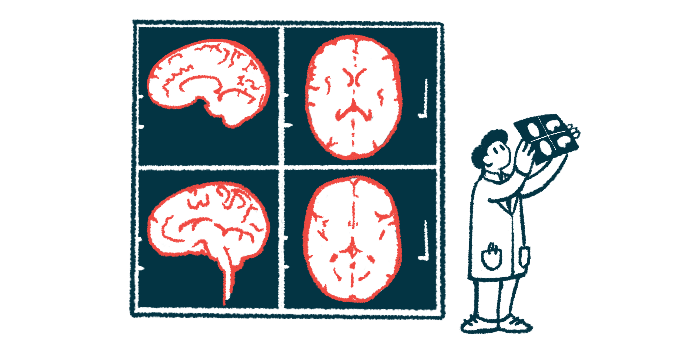Screening for skull deformities necessary in some Alagille patients
Diagnosis crucial as abnormalities may put pressure on brain

Alagille syndrome may cause problems with skull development that can put abnormal pressure on the brain, and screening babies at risk for these rare problems can help doctors treat them promptly, according to a study that looked at six pediatric patients in France.
Surgery may be effective at addressing the deformity and relieving brain pressure, so appropriate screening to accurately diagnose this complication is crucial, the researchers said. The study, “Craniosynostosis as a cause of intracranial hypertension in Alagille syndrome: a case series of 6 consecutive pediatric patients,” was published in the Journal of Neurosurgery.
When a baby is born, the skull is made of soft, bony plates that are not yet fused together, and there is a soft spot in the middle of the head where the bone of the skull is not yet covering the brain. As a baby grows, the pieces of the skull grow and eventually fuse together to form a single solid mass of bone covering the brain.
But sometimes the skull fuses too early, a condition known as craniosynostosis. This can increase pressure on the brain and give rise to intracranial hypertension, or high blood pressure in the brain. It can also result in papilledema, an eye disorder marked by swelling of the nerves that connect the eyes to the brain. Symptoms can include visual problems, headaches, and nausea.
ICH diagnosis challenging
Alagille syndrome is a rare, genetic condition marked by abnormalities in embryonic development. It often causes liver and heart defects, with many patients also showing facial features and eye problems.
But the disease can also have consequences on several other parts of the body. To date, there have been four documented cases of craniosynostosis in people with Alagille syndrome.
“Diagnosis of ICH [intracranial hypertension] and craniosynostosis in these patients is challenging due to the frequent presence of [papilledema-like features] and to peculiar facial features, respectively,” the researchers wrote.
The researchers reported on six children — four girls and two boys — with Alagille-related craniosynostosis who were treated at their center between 2012 and 2024.
Their median age at referral was 6, with the range being 15 months to 6 years. All carried mutations in the JAG1 gene, which is the most common cause of Alagille syndrome.
Two of the children, who were siblings, had mild liver enlargement. Another two had severe cholestasis, or reduced flow of digestive fluid from the liver to the intestines, and one needed a liver transplant. The two remaining children had no notable liver health issues.
All children had posterior embryotoxon, an eye abnormality marked by a white ring lining the thin, transparent membrane that covers the eyeballs. In all but two children, craniosynostosis led to symptoms of intracranial hypertension and papilledema, such as headache, vomiting, visual deficits, and mild cognitive impairment.
After imaging of the skull confirmed craniosynostosis, these four children underwent a surgical procedure to separate out the pieces of the skull, giving space for the developing brain.
The surgery was effective in all cases at relieving symptoms of intracranial hypertension and papilledema. Two of these children also had abnormally small heads, but experienced notable growth in head circumference after surgery.
For all six of the children, there was a notable delay in craniosynostosis diagnosis, even after the detection of intracranial hypertension symptoms, the researchers noted.
Given that craniosynostosis can cause serious health consequences and can be addressed with surgery, appropriate screening using imaging of head structures is vital, they said.
“Given the possible severe complications of untreated [intracranial hypertension] and the difficulty of diagnosing craniosynostosis in conditions with severe [health issues outside the head], we suggest systematic use of [head CT or MRI scans] in patients with [Alagille syndrome] who have papilledema, and we recommend prompt surgical management,” the scientists wrote.





